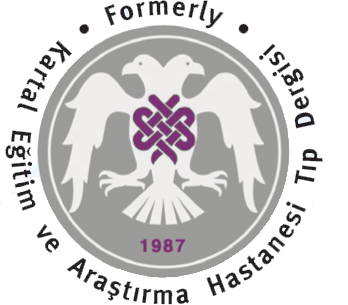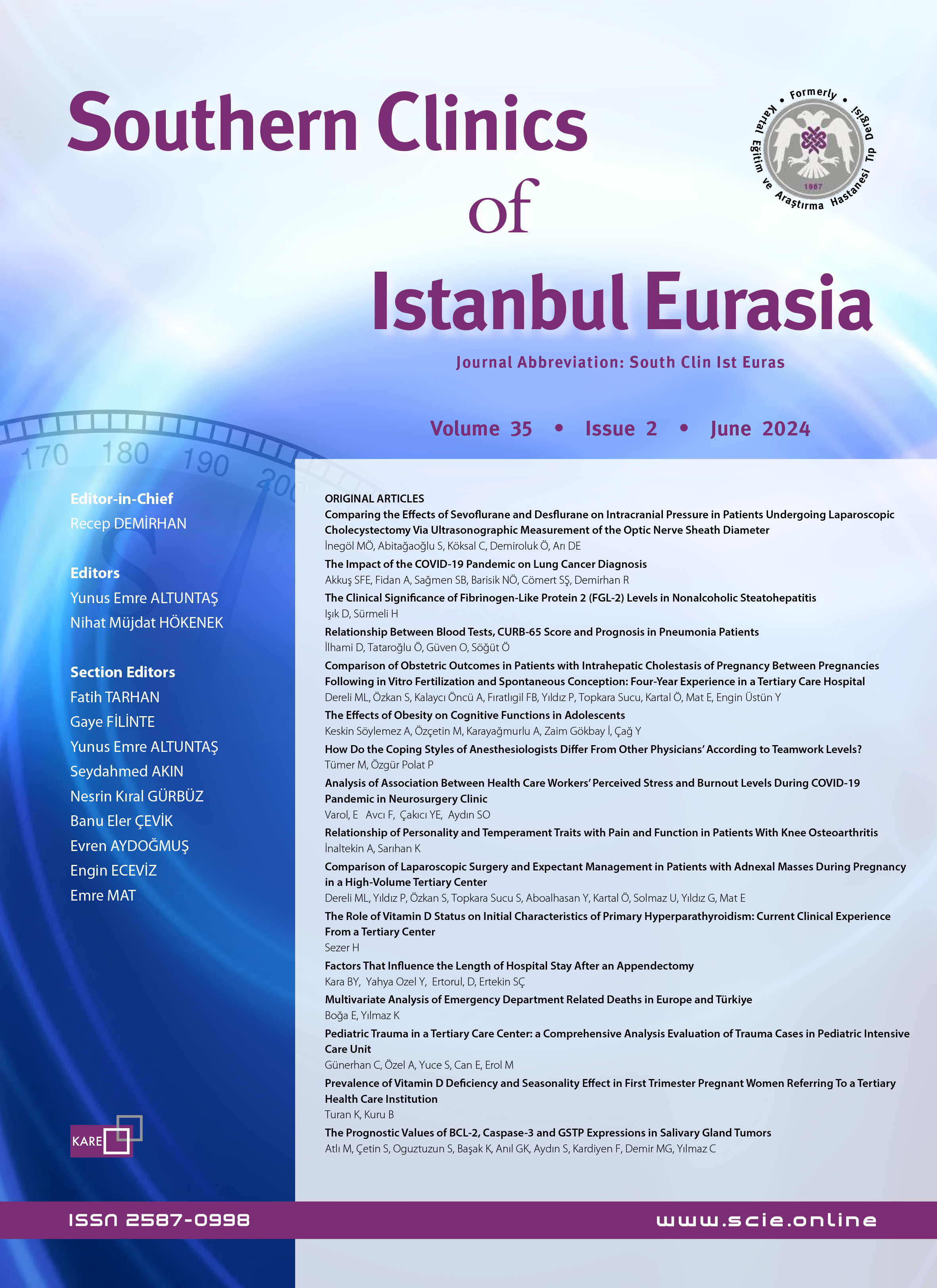Endovascular Treatment of Intracranial Aneurysms: A Two-Center Retrospective Analysis of Clinical Outcomes
Mehmet Selim Gel1, Emrah Keskin21Department of Brain and Nerve Surgery, Trabzon Kanuni Training and Research Hospital, Trabzon, Türkiye2Department of Brain and Neurosurgery, Zonguldak Bulent Ecevit University Faculty of Medicine, Zonguldak, Türkiye
INTRODUCTION: The aim of this study was to evaluate the clinical and angiographic outcomes of endovascular treatment (EVT) for intracranial aneurysms (IA). The efficacy and safety of coil embolization, flow diverter (FD), and coil + FD combination were examined.
METHODS: Between 2019 and 2022, 110 patients who underwent EVT in two centers were retrospectively analyzed. Demographic data, aneurysm characteristics, treatment modalities, and procedural outcomes were compared. The primary endpoint was complete aneurysm occlusion as assessed by the Raymond-Roy Occlusion Classification (RROC). Secondary endpoints included complication rates, neurologic outcomes, and clinical outcomes at follow-up (modified Rankin Scale (mRS)).
RESULTS: Of the 110 patients included in the study, 84.5% had aneurysms localized in the anterior circulation and 15.5% in the posterior circulation. The rates of RROC 1 were 69.8% in the coil group, 71.8% in the FD group, and 71.4% in the coil+FD group (p=0.231). Thromboembolic complication rates were higher in the FD (20.5%) and coil + FD (21.4%) groups, while intraoperative rupture rates were 10.3% in the FD group. In terms of neurologic outcomes, mRS 0-2 rates were 93.0% in the coil group, 89.7% in the FD group and 85.7% in the coil + FD group (p=0.161).
DISCUSSION AND CONCLUSION: EVT is an effective method in the treatment of IAs. Although the clinical and angiographic results of coil, IA and coil + FD combinations are similar, thromboembolic complications have been shown to be higher in the groups using IA. The need for individualized patient management and long-term follow-up in treatment selection is emphasized.
İntrakraniyal Anevrizmaların Endovasküler Tedavisi: Klinik Sonuçların İki Merkezli Retrospektif Analizi
Mehmet Selim Gel1, Emrah Keskin212
GİRİŞ ve AMAÇ: Bu çalışmada, intrakraniyal anevrizmalar (İA) için endovasküler tedavi (EVT) yöntemlerinin klinik ve anjiyografik sonuçlarını değerlendirmek amaçlanmıştır. Koil embolizasyonu, akım yönlendirici (AY) ve koil + AY kombinasyonunun etkinliği ve güvenliği incelenmiştir.
YÖNTEM ve GEREÇLER: 2019-2022 yılları arasında iki merkezde EVT uygulanan 110 hasta retrospektif olarak analiz edilmiştir. Hastaların demografik verileri, anevrizma özellikleri, tedavi yöntemleri ve prosedürel sonuçları karşılaştırılmıştır. Primer sonlanım noktası, Raymond-Roy Oklüzyon Sınıflandırması (RROS) ile değerlendirilen tam anevrizma oklüzyonu olmuştur. Sekonder sonlanım noktaları arasında komplikasyon oranları, nörolojik sonuçlar ve takipteki klinik sonuçlar (modifiye Rankin Skalası (mRS)) yer almıştır.
BULGULAR: Çalışmaya dahil edilen 110 hastanın %84.5inde anevrizmalar anterior sirkülasyonda, %15.5inde ise posterior sirkülasyonda lokalizeydi. RROS 1 oranları koil grubunda %69.8, AY grubunda %71.8 ve koil+ AY grubunda %71.4 olarak bulundu (p=0.231). Tromboembolik komplikasyon oranları AY (%20.5) ve koil + AY (%21.4) gruplarında daha yüksek iken, intraoperatif rüptür oranları da AY grubunda %10.3 olarak belirlendi. Nörolojik sonuçlar açısından mRS 0-2 oranları koil grubunda %93.0, AY grubunda %89.7 ve koil + AY grubunda %85.7 idi
(p=0.161).
TARTIŞMA ve SONUÇ: EVT, İAların tedavisinde etkili bir yöntemdir. Koil, AY ve koil + AY kombinasyonlarının klinik ve anjiyografik sonuçları benzer olmakla birlikte, AY kullanılan gruplarda tromboembolik komplikasyonların daha yüksek olduğu gösterilmiştir. Tedavi seçiminde bireyselleştirilmiş hasta yönetimi ve uzun dönem takip gerekliliği vurgulanmaktadır.
Manuscript Language: Turkish



















